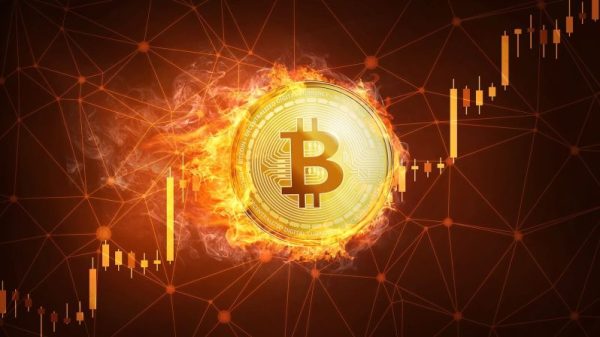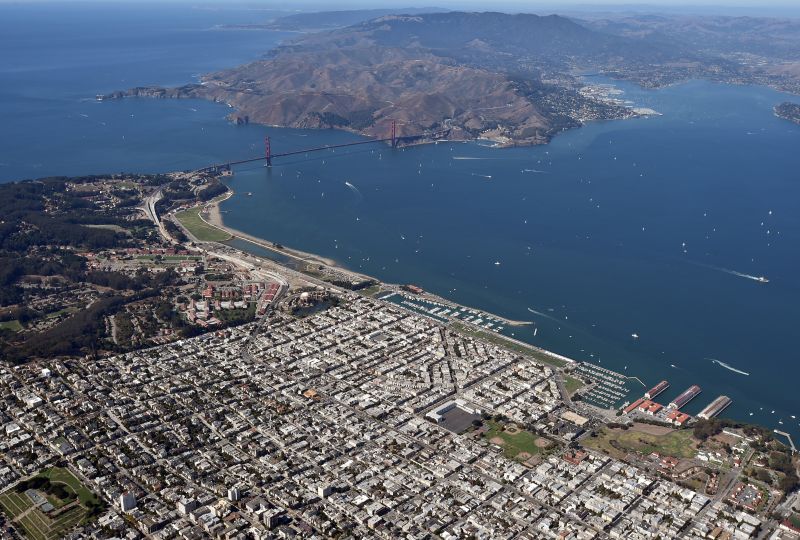San Francisco is undeniably having a moment.
Over the past year, headlines claiming the city is caught in a spiraling “doom loop” have become so prominent that a city commissioner decided to cash in on downtown San Francisco’s storefront vacancies, homelessness and opioid issues by anonymously advertising an hour-and-a-half long tour showcasing “doom and squalor.” For $30 a person, you could see the city’s “open-air drug markets” and “abandoned tech offices” first-hand.
However, just before it was scheduled to take place, the tour was canceled (and the commissioner ultimately resigned). Instead a more “positive” walk organized by a local nonprofit guided participants through the city’s Tenderloin, highlighting a neighborhood that’s long been a poster child for the city’s hardships.
While people sleeping on sidewalks and drug use were still visible, it focused on the community’s more positive attributes, including a rich history, art and a career center that’s working to get struggling San Franciscans back on their feet.
Still, for many would-be visitors, it’s San Francisco’s more discernible difficulties that are the real deterrents.
“My clients who’ve recently been to San Francisco have never said they felt unsafe,” says Alana Scalise Livingston, owner of Wander Spokane tours in Spokane, Washington (and a former San Francisco resident). “They just say it’s not as nice as it used to be, and there are many homeless people flooding the streets.”
Joshua Hirsch, owner of Sidewalk Food Tours SF, has received much of the same feedback. “According to our tour participants, the homeless people in cities like San Francisco and New York seemed to have become more brazen and outspoken since the pandemic,” he says. “They think it’s their neighborhood, and you don’t even have the right to be walking on the sidewalk.”
Additionally, there’s the city’s so-called “death spiral” or “doom loop” touted by news outlets (including the city’s own) – in which remote work leads to empty real estate, resulting in less foot traffic and then shuttered restaurants and reduced public services. This in turn leads to more overt drug activity as well as unhoused individuals congregating in front of unoccupied spaces.
It’s not that the tales of downtown retail stores closing in bulk and vacant office buildings are untrue, nor are the stories of drugstore chains such as Walgreens locking up most everything in the store behind see-through cabinets, though the latter is occurring in other big cities nationwide.
San Francisco has also been experiencing a rash of car break-ins, including this SF Whole Foods garage break-in video that went viral in Indonesia, that many fear could have long-lasting effects on the city’s tourism.
This past June, the investment firm behind the Hilton San Francisco Union Square (at 1,921 rooms, it’s the city’s largest hotel) and the nearby Parc 55 hotels announced that it is stopping payments on a $725 million loan and surrendering the remaining debt to its lender. Tech companies such as Red Hat and the SF Bay Area’s own Meta have decided to cancel their 2024 conferences in San Francisco as well, citing ongoing concerns over safety and the cleanliness of downtown streets.
‘It felt vibrant and alive’
It seems like everywhere you turn, the news about San Francisco just keeps getting worse. Or is it just the news we’re reading?
“We definitely feel like there is a significant misconception of what is really happening on the ground,” says Dina Belon, chief operating officer at Staypineapple Hotels, which has a property in San Francisco’s Union Square district.
Yuki Hayashi, a Toronto-based marketing writer and editor who visited San Francisco in late July for the city’s annual marathon, agrees. “Based on what we saw on Reddit, my family and I thought the city had turned into some post-apocalyptic hell zone,” she says. “But instead it felt vibrant and alive.”
The San Francisco hoteliers and restaurateurs interviewed for this article acknowledge that a drop in the city’s tourism this summer has been evident. That’s the result of a combination of factors, they say. They include the negative headlines and fewer full-time office workers, “which has significantly reduced our business and corporate travel,” says Belon. There’s also the absence of Chinese tourists — which pre-pandemic was one of the city’s top international markets — because of Covid and flight restrictions.
But they also agree that many of the gloomy headlines have been misleading.
“Yes, there are parts of San Francisco that need work,” says Marc Zimmerman, owner and executive chef at Gozu, a modern Japanese eatery located in the city’s East Cut neighborhood. “I don’t think we should pretend that the city doesn’t have issues. But the whole idea that, you know, everybody’s just laying around every SF street with needles hanging out of their arms is definitely a stretch.”
Ben Parks, board chair for San Francisco City Guides, feels similarly.
“It’s like, if the negative media coverage is all you pay attention to,” he says, “you just really miss out on everything the city has to offer.”
His all-volunteer organization has been leading free walking tours citywide for nearly five decades and currently has 79 offerings. Parks says that these days, their attendance has actually been increasing, with what the organization suspects are more local residents interested in learning about the city’s neighborhoods, which in many cases are where San Francisco continues to impress.
“There are so many good things happening in many of our neighborhoods and communities,” Grace Horikiri, executive director of San Francisco’s Japantown Community Benefit District, “and it often gets overshadowed by all the non-positive news.”
Within the past year, Japantown has welcomed new restaurants such as Copra and Fermentation Lab, saw the opening of the Kimpton Hotel Enso in its former Buchanan Hotel space and watched the growth of its popular monthly Mini Art Market in the community’s Japantown mall.
New businesses, new life
The city is also seeing new life in some of its major tourism hubs.
This August, IKEA bucked the trend of major retailers moving out of downtown and opened a San Francisco store focusing on small-space living along Market Street (between Sixth and Fifth streets), while more than 15 local small businesses, including Devil’s Teeth bakery, Holy Stitch! apparel and The Mellow, are setting up pop-up shops in vacant downtown storefronts, beginning mid-September.
Over in Fisherman’s Wharf, San Francisco’s iconic Ghirardelli Chocolate Company hosted the grand reopening of its Original Ice Cream and Chocolate Shop in July after a six-month renovation. The city’s LUMA hotel, which opened in 2022 adjacent to the city’s Chase Center sports and entertainment area, even won Tripadvisor’s 2023 Travelers’ Choice Best of the Best award, despite San Francisco’s negative narrative.
Chinatown, a neighborhood especially hard-hit by the pandemic, is hosting a series of new festivals, including a Halloween Festival on October 28. In January, the community also saw the long-awaited opening of its Rose Pak Muni metro station, providing Muni light-rail riders direct access to the heart of Chinatown’s streets.
Whether it’s Golden Gate Park’s 1.5-mile stretch known as JFK Promenade, with its Adirondack chairs; street art and playable pianos, which became permanently vehicle-free during the pandemic; or city stalwarts such as Amoeba Records in the Haight-Ashbury (which Santa Cruz bookseller Liz Pollock says is still filled with people “flipping through LPs” every time she visits), the city is in many ways just going about its business.
‘We needed a kick, and we got it’
Homelessness has been an ongoing issue in San Francisco, with thousands of homeless people sleeping on the streets on any given night, and the effects of the pandemic have brought it even more to the city’s forefront. “The challenges that San Francisco has always had are just more visible,” says Belon.
However, when it comes to violent crimes in US cities, San Francisco’s numbers are comparatively low. Larceny, such as car thefts and break-ins, is what really drives up crimes figures in the city and at the same time drives away visitors.
“We can’t just act like nothing is wrong,” says Zimmerman, “but for whatever reason, that’s the direction we went. But I feel like we needed a kick, and we got it. This is a great and resilient city, and now we’re seeing a big push to bring it all back.”
To help curb auto break-ins, the San Francisco Police Department is beginning to deploy bait cars that can help identity and arrest thieves, notably in tourist areas such as the Palace of Fine Arts, Alamo Square and Fisherman’s Wharf.
Getting homeless people off the streets and into places where they can get viable help (mental and physical) isn’t so easy, but that’s not to say efforts aren’t being made. In December 2022, a federal judge effectively barred the city from breaking up or sweeping tent encampments until there are more shelter beds than individuals, but the issue isn’t so cut and dry.
While the San Francisco Homeless Outreach Team works collaboratively with the Department of Public Health’s Street Medicine team to address the medical and behavioral health needs of many of the city’s homeless residents and also to offer them volunteer overnight shelter, many would rather stay on the streets for reasons such as feeling unsafe in shelter and the inability to keep their belongings with them.
Still, says Zimmerman, “It’s a different experience for those of us who walk around San Francisco every day. Yes, there are parts of the city that need work. But just in the neighborhood of Gozu, you’ve got Salesforce Park that is beautiful. The ballpark is beautiful. This is the perfect opportunistic position for San Francisco to bounce back.”
While raising capital for his newest venture, Yokai, a new hi-fi listening bar with cocktails and food that’s scheduled to open just a short walk from Gozu in mid-September, Zimmerman first heard a term that he’s since adopted as his own: “SF long,” which investors and other long-term San Francisco residents have been using to show their commitment to the city.
“It means, ‘we’re weathering this out together, and we’re not going anywhere. We’re in it for the long haul,’ ” Zimmerman said.
For all of San Francisco’s perceived and more evident troubles, the city still has a lot going for it.
“We have the geography,” says Zimmerman, “the location — with both Napa and Sonoma both an hour north — the restaurant scene, some great museums, and this awesome cultural melting pot of people. The whole thing is very unique.”
Others such as Belon, Pollock and Livingston feel the same. “It’s the whole experience of it,” says Pollock, “and you can’t find it anywhere except San Francisco.”
Laura Kiniry is a freelance journalist and 28-year resident of San Francisco. She lives in the Haight-Ashbury neighborhood.







































